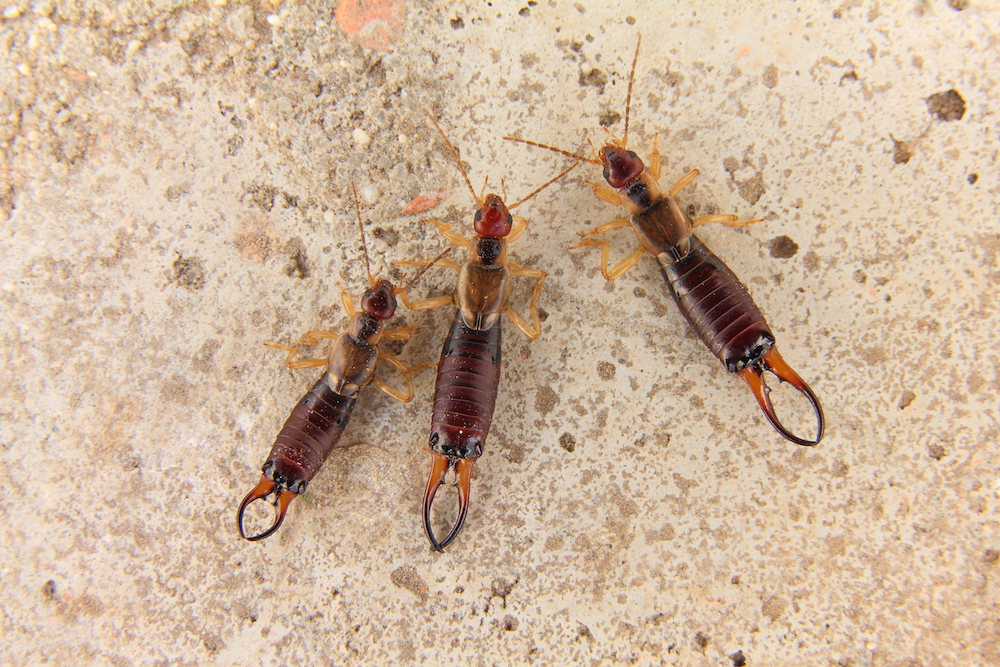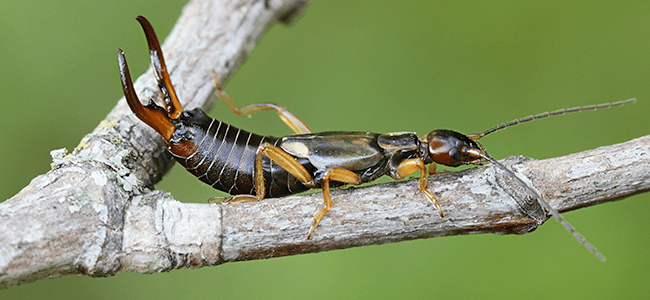Table Of Content

Since earwigs are attracted to a damp environment, an earwig infestation is rather unlikely in your warm home. However, earwigs can stow away inside bundles of newspapers, boxes, lumber, books and plants and can be brought indoors unintentionally. There are a couple of ways you can lure earwigs out of hiding, especially when they’re active at night.
Make a DIY Bug Spray
Despite their scary-looking pinchers, earwigs will only pinch if threatened. Typically, these pinchers are used for defence against predators, hunting smaller prey or play a role in their mating competition. The alcohol is strong enough to penetrate the earwig's waxy coat, and kill these pests instantly. As a full-time freelance writer and editor, Nicole has been wearing sweatpants to work since way before coronavirus made it cool.
How do I know if I have an earwig infestation?
Most types of earwigs generally prefer wet areas that are cooler and undisturbed. If there is adequate ground cover, wet soil, and food, the earwigs will do well. The small brown insects are nocturnal and hide in dark cracks and crevices during the daytime.
How to Get Rid of Earwigs (or "Pincher Bugs")
Using them outdoors and by windows will keep flying earwigs away by removing the temptation. If they’re present in your region, keep your exterior lights off at night when possible, and minimize interior lights as well. “Keep landscaping well maintained and properly watered without over watering and allowing puddles to form,” Clapper recommends. When earwigs take up residence close to our house, it’s only a matter of time before they find their way inside. You might notice plants and flowers with chew marks and/or tiny black pellets of earwig excrement.
“There are also multiple bait and liquid products to help deter and kill earwig populations if necessary,” Clapper says. If you’d prefer not to go the DIY route, you can always seek pest control in the form of treatment and regular maintenance to prevent another issue. Earwigs love to sneak into the house through the most unsuspecting of openings, and they’re also attracted to moisture. Finding them in your home could be a sign of water-damaged wood or wood-destroying organisms such as termites or carpenter ants. “If excessive amounts are seen inside, then a good inspection for cracks, holes and leaks would be advised,” Clapper says.
Earwigs are a class of insects belonging to the order Dermaptera. The nocturnal pests have pincers like forceps (cerci), six legs, and two antennae. Most species of earwigs have short forewings that are used to cover very thin folded hindwings that expand like a fan. Since earwigs prefer moist protected areas, they usually congregate in areas with high condensation such as unventilated basements. Earwigs are also attracted to dirt and leaves, so an unfinished basement floor is an ideal environment for these pests. Using a dehumidifier and cleaning up cement floors can help get rid of earwigs.
Although pests in your garden are not generally welcomed, earwigs are typically unharmful to your garden unless there is an infestation. Plus, since earwigs are omnivores, an infestation could cause noticeable damage to your plants. Therefore, when you are looking to get rid of them, you can usually find them in damp garden mulch, under rocks, beneath wood piles and other debris. You can eliminate earwigs from your garden without chemicals by using diatomaceous earth. DE is a naturally occurring substance, and the white power is highly abrasive to pincher bugs’ exoskeleton.

How to Attract Toads and Frogs to the Garden
A mother can carry eggs inside her for an extended period of time, sometimes as long as a few months. Once laid, the eggs will typically hatch after 7 days, where the earwig will experience their first molting. Indoors, you may find a few strays leaving their outdoor homes for a nice wet and cool environment, such as a basement with a leak or pile of wet towels. Finding them indoors can be worrisome for a homeowner, but relief can be found knowing they are most likely an outdoor insect temporarily seeking asylum in your house. The main methods of killing earwigs are insecticides, traps, and other household materials.
Cracks and crevices should be well sealed with a silicone-based caulk, steel wool or a combination of both. This practice includes sealing doors and windows, as well as attic and foundation vents. An Earwig’s thorax will contain its six legs, with three on each side. Most earwigs will have two pairs of wings, with one set acting as a leathery cover (front-wings) to protect the other thin, almost silk like nature of the hind-wings.
These bugs are relatively harmless, but they will feast on plant leaves and decaying wood, causing damage. Earwigs thrive in damp conditions, either in your garden or in musty corners of your home. Target these pests directly with natural or chemical killers, and prevent them from coming back by safeguarding your home and garden.
Earwig infestations are quite rare to come across, but knowing more about an earwig's life cycle can help illuminate why you are seeing them. Once you’ve gotten rid of the infestation, take some time to fortify your home and yard against a future earwig problem. Protect the tree trunk by wrapping it in plastic wrap, and smear a line of petroleum jelly about two inches wide around the tree. Inspect your home to see where critters of any type might come in—particularly cracks in the foundation, gaps in windows or holes in window screens. After removing the earwigs, Megan Wede from Done Right Pest Solutions suggests eliminating moist areas around your home to prevent any from returning. Earwigs like to hide, and they can hide in the strangest of items, household items, and outdoor furniture items.
As with most insects, earwigs go through the stages of metamorphosis, as their bodies will develop throughout their life to acquire their fully functional physical features. Always inspect flower bouquets and houseplants before bringing them home—earwigs hide near the center of flowers, especially flowers with tight petals. Shake out earwigs gently or remove them with tweezers and drop them into soapy water.
That’s because insects such as earwigs are tasty, protein-packed snacks for our feathered friends. Mix equal parts vegetable oil and soy sauce in a small plastic container, punch holes in the side, and bury it up to just below those holes. The peckish pests are attracted by the salty condiment’s smell and will crawl into the container. Trapped in the oil, they’ll perish before they even have a chance to work up their appetite again. Like other nocturnal creatures, earwigs are attracted to light.
They’ll likely be drawn to secluded, damp areas in your home like unventilated crawl spaces or basements. This creates a conundrum for gardeners… Should earwigs be allowed to remain in your garden to eat up aphids and other pests? Or should they be removed before they turn their attention to your plants? Generally, earwigs do not cause enough damage to be worth fighting. However, if you do see large numbers of them around your plants, you can consider taking action. Kill earwigs with a spritz of 70 percent rubbing alcohol and water.
Put simply, you'll need to lightly wet a newspaper (so it's damp, not soggy). The key thing here is not to make the shape too tight, otherwise the earwigs won't be able to enter your tabloid-based trap. Chances are if you've tried your hand at some sort of stain removal or laundry hack, you've got borax in the house.
But on the other hand, large numbers can start damaging your plants. Pincher bugs can become pests in yards, feeding on various types of vegetation from late June through October. Although they eat decaying plant matter, they also damage healthy plants. For example, they chew irregular holes in the leaves of hostas, marigolds, butterfly bushes, and sunflowers.

No comments:
Post a Comment